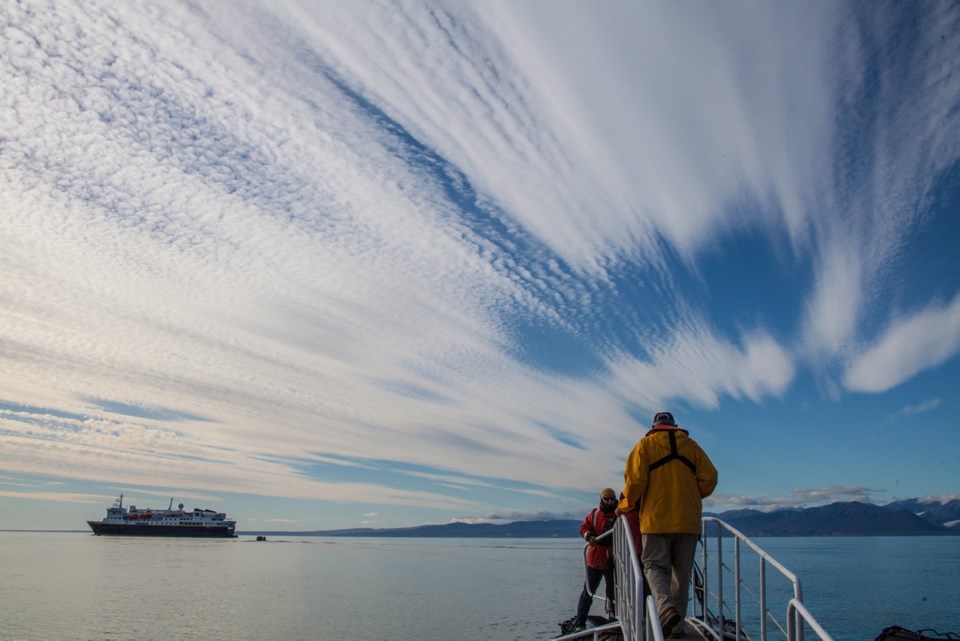Ever-higher temperatures are melting the ice sheets faster than projected. The sea level is rising. International efforts to reduce greenhouse gases are taking longer than expected. It’s a nightmare scenario that could soon demand an emergency response. What to do?
One idea gaining traction is to seed marine clouds with saltwater or other particles, increasing their potential to reflect solar rays, cooling the earth. It’s part of a nascent and controversial branch of science known as “sunlight reflection methods,” or SRM.
“We think SRM could buy time for other [carbon-reduction] measures to be put in place,” said Philip J. Rasch, chief climate scientist for the Pacific Northwest National Laboratory in Richland, Washington.
“If the worst-case scenarios of global warming come to pass, these technologies could be used to help people, saving lives and economies from the worst effects of climate change,” added Joseph Majkut, director of climate policy at the Niskanen Center, a Washington, D.C., think-tank.
Rasch and Majkut are two climate specialists who testified last week before the U.S. House Committee on Science, Space and Technology, which held a subcommittee hearing on the potential for “geoengineering” — a catch-all for proposals to cool the atmosphere or pull carbon emissions from it.
While Republicans in the House often dismiss research that man-made emissions are a driving cause of global warming, some conservatives are interested in the potential of geoengineering techniques.
They hope that technologies to cool the climate or remove carbon dioxide from the atmosphere will reduce pressure to impose more regulations on industry, particularly oil companies and other producers of fossil fuels.
At Wednesday’s hearing, all the specialists testifying said geoengineering techniques shouldn’t be substituted for efforts to reduce greenhouse gases and prepare for climate change impacts. This point was also hammered home in a letter Wednesday by 24 scientists and environmental advocates. It stated that “any consideration of a federally funded and co-ordinated research program into geoengineering must be in the context of a strategic portfolio of responses to climate change.”
Democrats on the committee mostly agreed.
“It is absolutely critical to reduce carbon emissions and prepare for the changes that are coming,” said Rep. Jerry McNerney of California. But McNerney, a PhD mathematician who urged Smith to hold Wednesday’s hearing, said Congress should also explore whether geoengineering could serve as a quickly needed insurance policy.
“What tools are available? What are the technical feasibilities? What are the costs?” he said. “What are the risks of the different approaches to avoiding catastrophic change? That is where this hearing fits in.”
Geoengineering, which includes sunlight reflection methods, has been discussed by scientists since the 1960s, but with mixed enthusiasm, said Rusch. Some scientists fear that seeding clouds could have unintended effects, such as impacts on rainfall. Others worry it could divert attention away from basic climate research and technologies to reduce greenhouse gas emissions.
In recent years, concerns about accelerated climate change — including faster melting of Greenland and Antarctica — have prompted a reconsideration. This year, China announced a $3-million-a-year commitment to basic research into geoengineering, mostly computer modelling. Harvard University is also conducting research, using philanthropic donations.
At the University of Washington, a team of scientists has formed the Marine Cloud Brightening Project, which aims to drum up financial support for basic research, leading to small-scale tests of adding particles to clouds. The group is collaborating with retired California engineers and scientists to develop a nozzle that could spray saltwater at a rate of trillions of particles per second.
Scientists have long known that particles can increase the reflective power of clouds, especially in the Pacific Ocean. Particulate pollution from freighters, for instance, can be seen in satellite images, with the emissions causing smaller droplets in the clouds, reflecting sunlight.
Compared to ship emissions, saltwater is viewed as environmentally benign. But its corrosive properties have proven difficult for engineers working on the high-powered nozzle, according to Kelly Wanser, director of the Marine Cloud project.
“They were burning through titanium. They were burning through diamonds,” said Wanser in an interview following the hearing. “We’ve learned that these are really hard problems that take time.”
Along with seeding marine clouds, the research team is also looking into what’s known as “stratospheric aerosol geoengineering,” which would involve placing reflective particles in the upper atmosphere. Volcanoes do this during major eruptions, producing a regional cooling effect, but also spreading harmful pollutants, including sulfates.
Some researchers have proposed using calcium carbonate, a nontoxic particle, but one not natural in the upper atmosphere. So scientists would have to investigate potential impacts before a field experiment could even be attempted. “It also is a really hard engineering problem, to get the calcium carbonate into the stratosphere,” said Wanser, a Silicon Valley entrepreneur.
Actual funding for marine cloud brightening, or other techniques, will depend on how much time Congress thinks it has time to wait and watch.
“This is the only fast-acting way to reduce heat, within a time span of years to decades,” said Wanser.
“So if the catastrophes we are trying to avoid are in the next 30 or 40 years, this may be the only thing that will reduce heat.”



